As the first rays of dawn creep up on the city of Bengaluru, a distant roar fills the muted air. It is soon accompanied by other similar and louder ones. The din that follows can mean only one thing: the lions of the Bannerghatta National Park have awoken.
The beasts are among the 2,300 animals that are currently being housed at the sanctuary, which since its inception in 1970, has prided itself on the ex-situ conservation of biodiversity. It is a paradise to reckon with, one that the tourist guidebooks fall short of doing justice to. You need to witness it to believe it.
The many safaris organised here give guests an opportunity to be privy to the wilderness’ ways, while the 7.5-acre Butterfly Park has its own collection to boast of. Needless to say, the Bannerghatta National Park is a world where nature is allowed to unfold at its own pace.
Four years ago, on one such visit to the national park, three friends, Vijayaprabhu Damodaran (55), Revathi Paulraj (49) and Haripriya Santhanam (40), did not have the heart to leave this world behind and return to city life. An idea started brewing in their heads.
The three residents of a gated community in Arekere in South Bengaluru were united by a fondness for nature. One look at the unoccupied land on the outskirts of the Bannerghatta National Park and they knew it held promise.
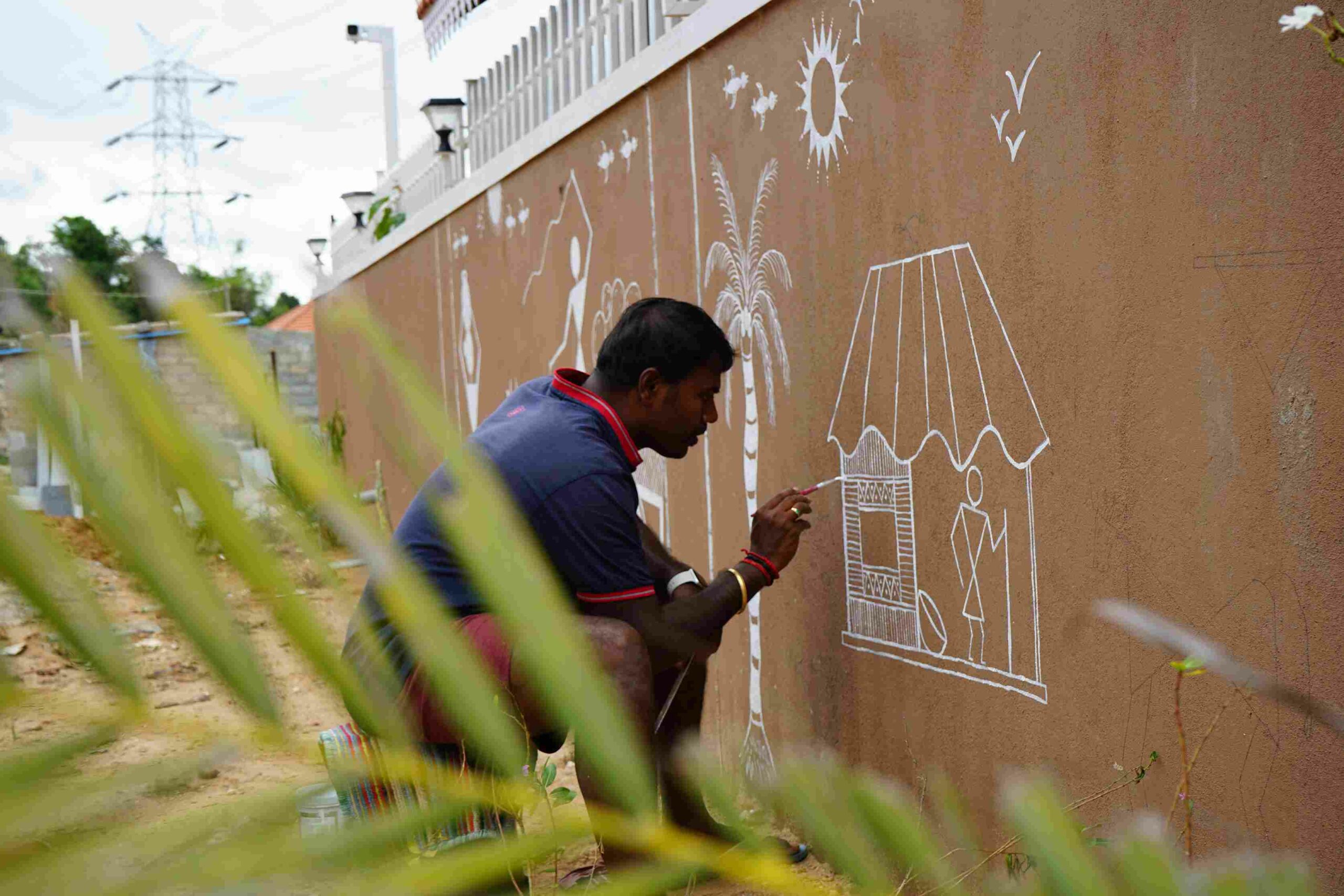
Anirudh Jagannathan, who has been the architect on this project since then, says he was surprised at the unique request. “They came to me with this proposal in 2021 and had purchased three pieces of land which they were looking to combine into a farmhouse.”
They commissioned a farmhouse to be built in a way that it stood on a cliff overlooking the Bannerghatta forest. The doors would open to the valley beyond. Haripriya, a technical manager at a corporate firm, says the intent was to lease the place out when it wasn’t being occupied by them.
“The homestay is surrounded by a thick cover of large trees and lush green vegetation. The idea was to have three ethnic fusion houses that blend ancient looks from the outside with vernacular architecture on the inside,” she adds.
As the pictures suggest, the architecture here really casts spells like a fairytale.
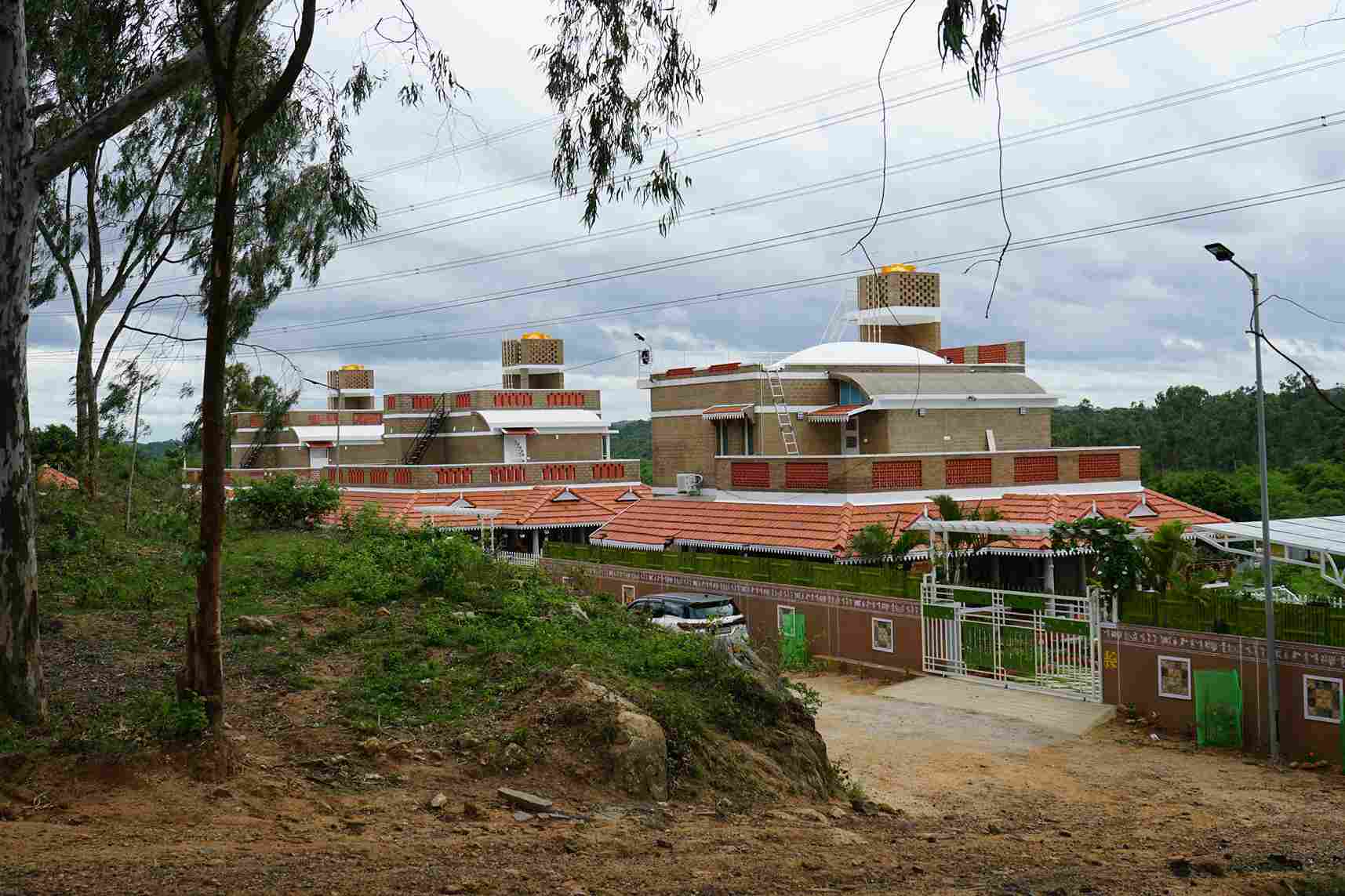
Breathing life into a deserted land
The decision to entrust the project to Anirudh was backed by the success of his previous projects which are rooted in sustainability. Building mud homes are Anirudh’s forte, the three discovered.
Vijayaprabhu, who has a background in the pharmaceutical industry, shares that the decision to invest in this specific location was followed by a conscious choice to opt for sustainable construction. “While we were looking for options, we came across vernacular architecture through our common friend and found it interesting. We spent time understanding the process of this construction and decided it was the right one to go ahead with.”
While Vijayaprabhu and Haripriya opted for a mud construction based on intrigue, to Revathi it held a personal allure. “I was born in a mud home in my native village and always wanted to go back to my roots. Mud houses have a direct connection with nature and induce a natural living experience.”
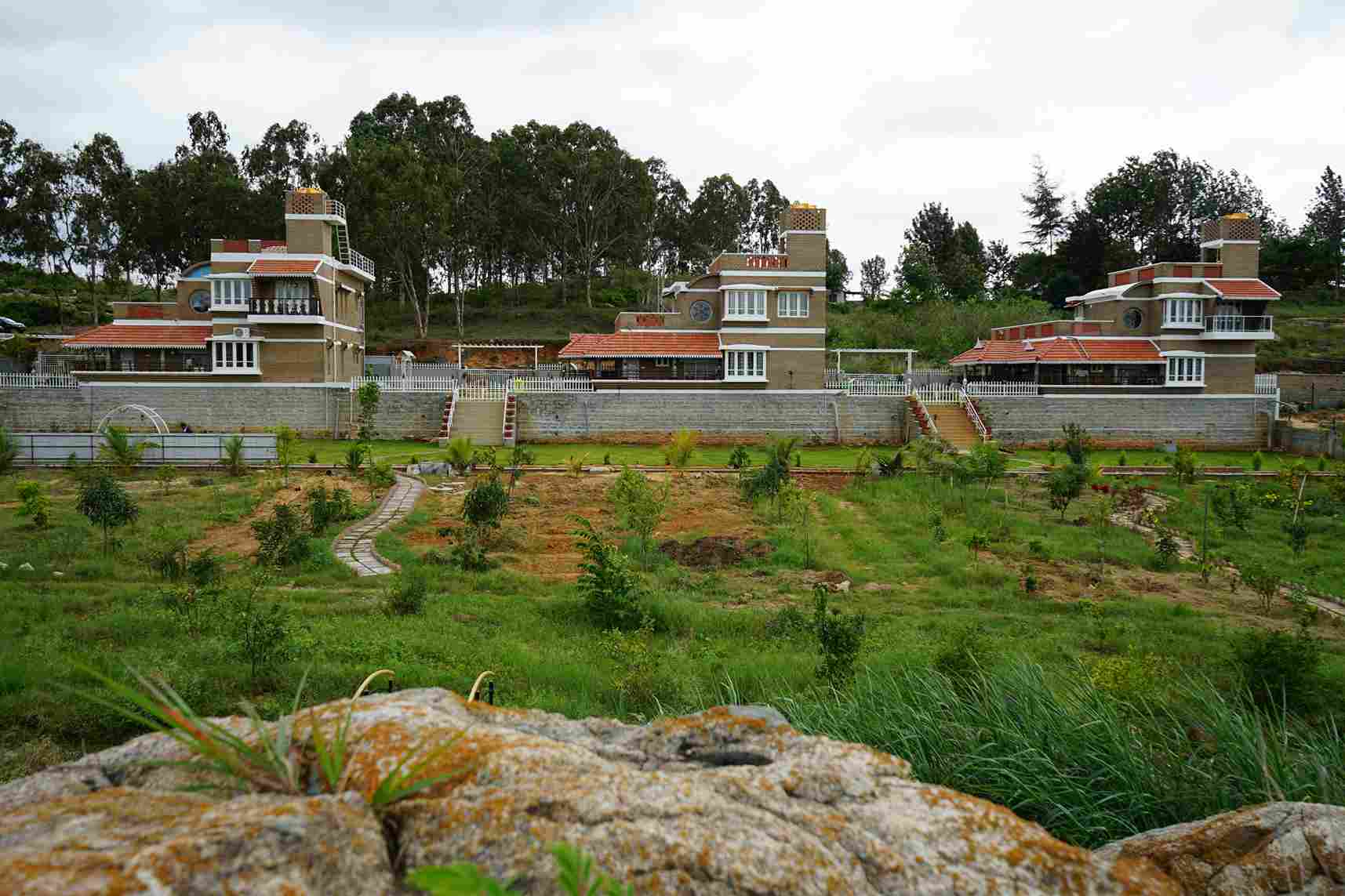
Anirudh, meanwhile, was more than happy to take it on. Designing a farm stay on the outskirts of a forest is not a project one comes across every day. As he describes the features of the farm stay spread across the four-acre land, one can tell how seamlessly the raw finesse of the property blends into the surrounding foliage. A process that lasted over two years saw the light of day six months ago when Anirudh handed the keys over to the trio.
Sharing his design philosophy, he says, “They were looking for a typical South Indian traditional home with a courtyard that would wrap itself around the front of the house. The courtyard would be a communal sit-out area where they could relax in the evenings and enjoy a glorious view of the farmland overlooking the valley.”
The friends insisted on an open-plan system with as few walls as possible. So, Anirudh shares that while the bedrooms and toilets are enclosed, the living room, dining room and kitchen spaces are continuous.
The entire property has been built keeping mud as the hero element, with stone filling in the spaces. What this does aside from being an aesthetic addition is that it breaks the monotony of the brown walls, explains Anirudh. The use of steel and concrete in the roof is eliminated as well.
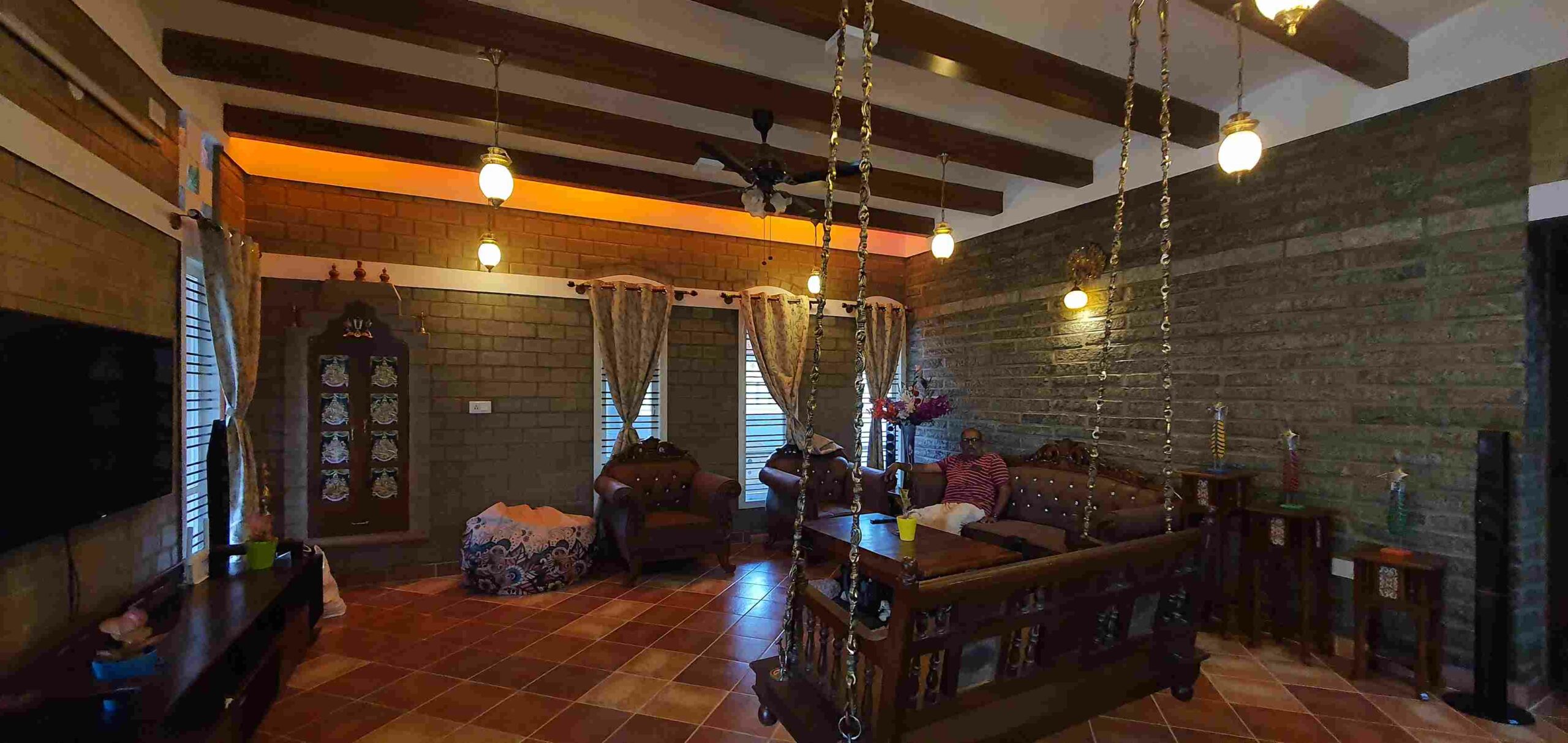
Imbuing sustainability into every corner
But is the home truly cement-free?
Though an attractive claim to make, Anirudh says a zero cement property isn’t conducive in present-day settings. These structures need frequent maintenance and upkeep, a challenge that modern homeowners may not be up for.
“For instance, people in the past would have annual gatherings during the harvest season where the entire extended families would come together and replaster the walls with lime. This does not happen today,” he explains.
Instead of discarding cement as a material completely, it is vital to respect it, notes Anirudh, adding that the construction comprises around 5 to 7 percent of cement.
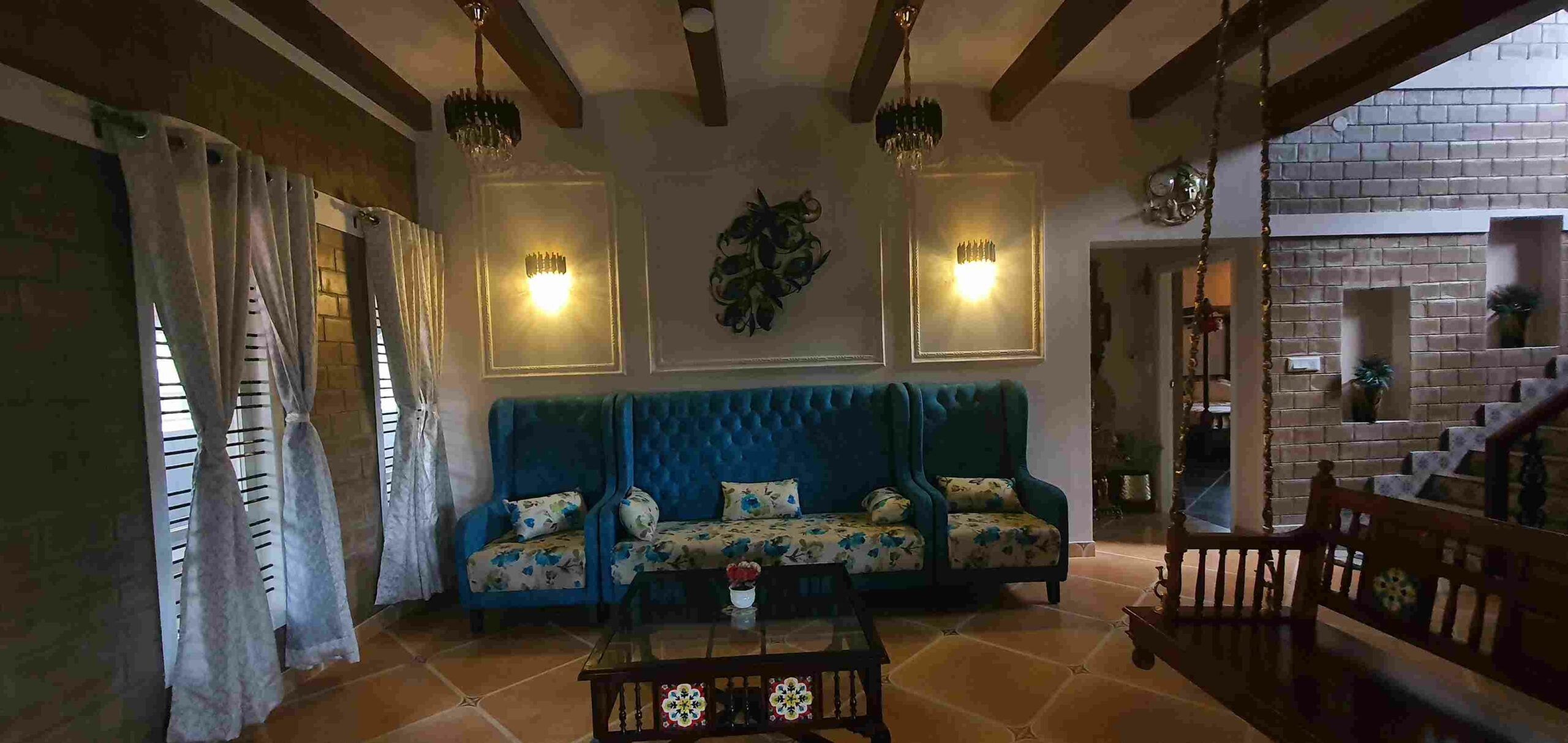
The three homes, although similar from the outside, have their own identity. Two of them are one-storey properties while the third only has a ground floor. However, no matter the layout, Anirudh emphasises that all three have been designed such that ventilation is maximum.
“We’ve ensured enough openings in the external walls to keep the rooms well-lit. A lot of cool air comes from the farmstay’s proximity to the woodland. Though numerous windows let air in, the clients prefer to have them shut most of the time as it gets cold. The ACs are almost always switched off,” he adds.
Aside from the large windows, skylights in the roof too let light and air in, while the mud blocks lend their own cooling abilities to the house.
The outside of the home parallels the beauty inside. What was once a barren land filled with boulders, has now seen a transformation into an orchard filled with fruit-bearing trees, and basic day-to-day vegetables such as small chillies, tomatoes, potatoes, legumes and rice. Haripriya proudly declares there to be more than a hundred trees. “These have all varieties of fruits like mango, jackfruit, jamun, litchi, butterfruit, guava, chikku, etc. We also cultivate seasonal crops like tomato, radish, cabbage, cauliflower, and chilli, among others.”
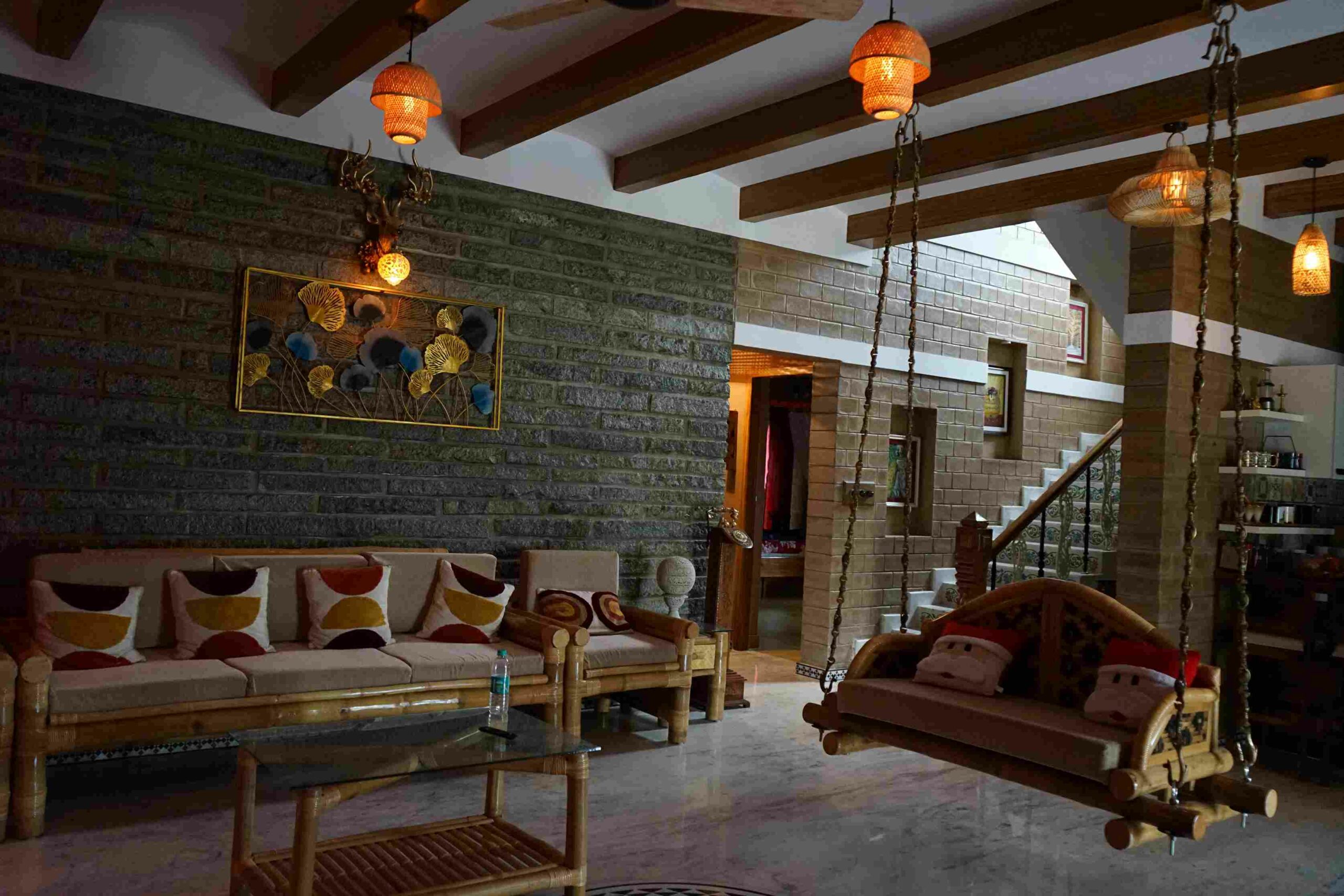
The property also has other sustainable amenities such as solar panels and rainwater harvesting facilities. Its strategic location on the slope means rainwater falling onto the land flows downward. The friends have used this fact to their advantage.
“They have built a small canal at the end of the hill, which terminates into a small pond. This also has a rainwater percolation pit where water is collected.” As the friends marvel at how a simple idea turned into a full-fledged property, they credit their architect with bringing the dream to fruition.
Edited by Padmashree Pande
No comments:
Post a Comment